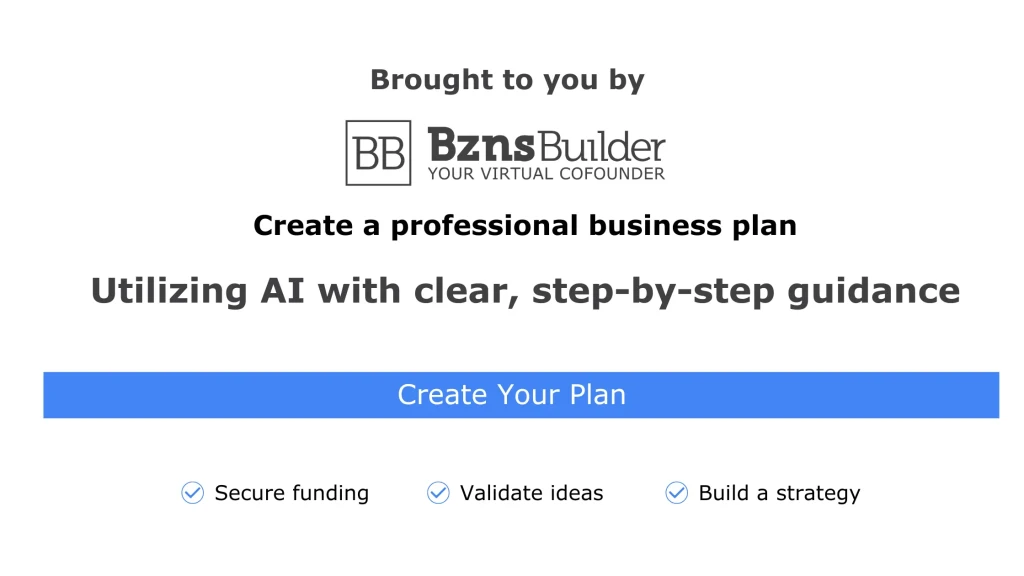Idea generation techniques that could blast your business

Idea generation is the fuel to a brighter future. A great idea can help you solve a business challenge, increase revenue, or better yet, start a new business altogether. While it may seem like an easy thing to generate cool business ideas, it requires practice and mastering a few techniques, but it is essential to make it an ongoing habit for your business to thrive.
In this article we will take you through:
- What is idea generation?
- Why is idea generation important for my business?
- How does the idea generation work?
- What are the methods for idea generation?
- Idea generation in entrepreneurship
- From idea generation to implementation
- Fostering an innovative workplace culture
What is idea generation?
Idea generation is the creative method that an entrepreneur uses to generate ideas for a new business. It also helps entrepreneurs recognize new possibilities to develop their businesses.
Idea generation is also a vital creative process for any established business looking to innovate. The new ideas can help a company in problem-solving, cutting costs, improving a product or process, or developing a new business line or product development.
Ideas are the start of everything, but an idea will turn into a dead idea if it isn’t followed by a framework to test it, put it into action, and implement it.
Read BznsBuilder Features
Why is idea generation important for my business?
Almost everything in life starts with a crazy idea. Recent studies have shown that an average person will have an average of 6000 thoughts per day; however, you will need a little challenge, or inspiration, to get yourself into the routine of frequently getting ideas.
Idea generation is vital in enabling you to develop a wide array of new ideas exceeding your current scope of thinking. The ideation process can help improve many business factors:
- Enhancing the performance of existing products of the services portfolio.
- Improving internal business processes and procedures
- Develop new lines of products or services.
- Solving current business problems
How does the idea-generation process work?
Idea generation is a structured process of research for knowledge gathering using systematic ideation processes. Whatever the method or technique used for idea generation, it usually follows the following steps:
- It starts with identifying the business need, challenge, or new products your business needs.
-
Identify the best ideation technique for your team.
- Start the exercise and gather data and insights.
- Finally, start idea screening to pick the most promising potential idea that can solve the problem or the business need.
What are the methods for idea generation?
Though it may seem relatively simple to generate new business ideas, most people will sometimes face a creativity block or lack of inspiration. While there’s no magic recipe to help you overcome your creative block and start tossing ideas, there is always something you can do to increase your chances.
Those are just a few of the techniques developed by the world’s brightest minds and used by the world’s largest businesses when they need to come up with ideas:
1- Brainstorming
Starting with the simple and most common method for idea generation, “brainstorming.”
This method is about informally gathering your team or all the project stakeholders, letting your minds wander, and coming up with thoughts and ideas spontaneously. Usually, the technique encourages people to speak up and explore the craziest ideas without any censoring or criticizing.
The chances are that you have already participated at least once in a brainstorming session. These sessions are usually used for:
- Generating new ideas for company development
- Problem-solving
- The innovation of the business process
While this is a widely used and popular technique, it has some drawbacks that make it the least effective ideation process. First, brainstorming sessions consume more time; it is hard to put those ideas on paper, and it is pressuring, which results in fewer creative ideas.
There are, however, multiple techniques that you can use to improve your brainstorming sessions and help you generate different types of ideas. One well-known technique is the brainstorming cards developed by the Board of Innovations, which is a set of cards with keywords that you use as an inspiration to come up with ideas.
2. The mind mapping method
Mind mapping, also known as idea mapping, is a proven creative technique initially developed by famous UK author Tony Buzan in 1972. It is a commonly used ideation technique in many creative fields. It helps frame and capture the information needed to develop an idea.
Creating a mind map is easy. You simply start by writing down or drawing the problem or the idea in the middle of a blank page or a whiteboard and then draw branches of words and concepts related to the problem or the idea.
For instance, if the problem you are having is about creating a business strategy, you may find yourself writing words like business planning, financial analysis, management tools, and organizational goals.
Idea mapping is a tremendous boost for creativity, and it will help you organize your thoughts visually. Visual ideas help you better communicate your thoughts.
3. Storyboarding
Storyboarding is basically a method to develop a visual story to explain or explore the idea or the problem. You start by putting a photo or written words related to the idea you are working on. Everyone on your team should participate. It could be by writing down quotes from stakeholders, value propositions, or drawing the buyer journey on a sticky note and putting it on the board. Finally, you try to create a story from all of these elements.
This ideation session usually results in a visual story that can help you understand how to connect different ideas. It is a cool creativity technique to represent ideas and come up with high-quality ideas.
4. Thinking in reverse
The reverse thinking method is an enjoyable one; you stop thinking about your goal and what you are trying to achieve and instead start brainstorming ideas about every problem that can happen to the given situation. It is also known as negative thinking, and it frequently drives people to come up with a bunch of creative new ideas.
For example, instead of improving your Facebook page reach, you start thinking about how to decrease the reach. The answer to this one is easy: don’t create engaging Facebook content and neglect adding a CTA. AND voilà, here is your answer to increase your Facebook reach.
Being aware of the problems that could go wrong is as important as planning to solve the problem.
5- Idea Challenge
The Idea Challenge is a directed form of innovation; you start by raising a problem or opportunity to explore.
The challenge is to participate in an ideation session and generate ideas according to preset parameters for a certain amount of time. The process typically follows a specific method called the double diamond of innovation.
The first half of this diamond is the problem phase, divided into discovery and definition steps. You start by discovering the problem, identifying as many challenges as possible, and evaluating their importance.
You then move to problem definition, which is an analysis done by the team to recognize recurring themes and refine the problem definitions. Finally, you choose a couple of problems to start focusing on solving.
The second half of the diamond is the solution phase, which is divided into developing and delivering. Solution development involves coming up with ideas and concepts for solving the problems mentioned above and refining them into an implemented solution.
Solution delivery is the final part of the solution. It merely means choosing the most appropriate solutions with a high probability of actual implementation and delivery and assigning a team to start this process.
Although hosting an idea challenge may seem a little exhausting to your resources and complicated, it is very handy and beneficial in many cases. You can test various parameters to come up with a variety of customizable solutions.
A well-planned idea challenge always has a much more prominent possibility of supporting the business innovation process.
6- SCAMPER
The SCAMPER technique, developed in the 70s by Bob Eberle, is an excellent method used to improve products or services or create new ones. It was created to provide 7 different strategies to find innovative ideas and solutions.
SCAMPER is an acronym for:
Substitute: The substitute technique concentrates on which elements in the product, service, or solution you can replace. In this phase, you need to focus on making decisions to substitute part of the process; it might be people, components, or steps in the process.
It would be best if you made sure that whatever you are substituting won’t affect the whole project and is, in fact, a better alternative.
For example, you may decide to raise capital from your inner circle first instead of a VC to create an MVP.
This technique provides alternative solutions for you to evaluate different solutions to reach the final decision.
Combine: is basically what can be combined together to give better results. You will have to study the possibility of merging two different ideas, components, or products into one single, more efficient outcome.
For example, your business may decide to combine two technologies to come up with a new technology.
Adapt: What can be added? What can you adapt as a solution? What minor or significant tweaks to the product or service can result in a more competitive result?
An example could be removing a feature from your product to make it easier for shipment or more price competitive.
Modify/Magnify: This method refers to adjusting the process to unleash more innovation. The modification focuses on improving the overall process. However, before jumping into modification, you need to ask yourself the following:
- How will these modifications improve the final product/solution?
- Will this help increase my consumer base?
- Can we change the process to work more efficiently?
For example, you may try modifying the product feature to accommodate new niche markets.
Purpose: Could your product or service have another use? Even if in a different industry? Maybe by adding a new feature, your product can serve more than one need.
For instance, you may use packaging that customers can use as containers for anything.
Eliminate/Minimize: What can be removed or simplified? In this part, you try to eliminate unnecessary resources. You need to answer questions like:
- What could happen if we removed a part of the product? Can it be more efficient?
- How can we deliver the same product without a particular part of the project?
Rearrange/Reverse: Can I exchange elements, designs, or products? What would happen if you reversed the product’s production process?
By exploring new idea generation techniques and finding the one that fits your team’s culture, you will give your team the creative tools that will help them generate ideas in any circumstances.
Idea generation in entrepreneurship
Entrepreneurs solve problems and fill in the gaps in the markets by providing better services and products for the people.
While entrepreneurship is usually a synonym for innovation, it is not always the case. Many successful businesses were built because of someone else’s invention by entrepreneurs who simply saw an opportunity to utilize this technology to create a new business. The trick is to spot the gaps where technology isn’t doing well and plan a spin-off.
Many of the most successful tech startups succeed because they manage to piggyback on existing technology. A very famous example of this approach is Amazon, which was in the early days relying on FedEx and Aramex infrastructure. Currently, Amazon has an enormous infrastructure that consists of fulfillment centers and their private delivery service.
However, while you don’t have to reinvent the wheel, as an entrepreneur, you will still need to develop your systematic ideation process to help your business thrive. Idea generation can be your key to a profitable business through cost-saving solutions and business innovation.
So, how can you always stay creative and get the coolest new ideas? There are a few simple things you can do:
- Find inspiration in the most uncommon places, like the car garage and kids’ area.
- Socialize with other circles than yours and listen carefully to their people talking.
- Read, read, and read some more. Read everything you can get your hands on; different content means different perspectives and ideas.
- Try new things, new food, new sports, and new music. Explore new aspects of life and get inspired.
- Work out and clear your mind.
- Put all your thoughts into a paper when you get them so you can get back to them later and develop them.
Next steps: From idea generation to implementation
Idea generation on its own is not the miraculous solution to the problem or the fuel of business growth; it is merely the first step of a long process until the implementation. Below is the process you need to take to ensure the efforts you have made in the ideation phase are yielding the desired outcomes:
Defining the problem/opportunity: This is where everything starts; you either get an “AHA” moment with a new idea or find inspiration from someone else’s work. Or maybe you have a problem in your business that you simply want to get rid of.
Research and Inspiration: Entrepreneurs can have an even more difficult problem than a creativity block. They may actually have an influx of ideas that they can’t validate. In both cases, in this step comes the ideation role; you need to pick up the right ideation method, invite your team or stakeholders, and start letting the creativity flow.
You will be surprised by the results you will get. You may likely find others who share the same ideas you have, giving you affirmation.
Idea screening: Now you have got 100 awesome ideas; it is time to screen those ideas. You will probably need to use a scoring system and checklists in addition to your and your team’s insights and experience to choose the most viable ideas.
Until this moment, you are not committed to changing the selected ideas to a fully operating business case. So far, an idea is just a concept hypothesis and might be edited or changed completely later.
Developing a prototype/testing: Now, it is time to test your hypotheses; don’t start by spending too much effort and cost in creating a complete product straight away.
Please start with an MVP (minimum viable product) and start testing, whether it is a business process or a product; involve internal and external stakeholders to try it and give you feedback.
It’s essential to keep an open mind for all the insights and feedback you will get. It is best to keep developing and iterating until you reach the optimal solution in the current situation.
Idea Optimization: In this stage, you start planning updates for the new product, service, or business plan to enable expansion and growth. You should be able to envision the future potential features and implementations of your idea.
In case you are an entrepreneur and are launching your new business, this is also an excellent time to assemble resources to go from MVP to launch. You may also consider starting to raise capital.
Fostering an innovative workplace culture
For a business to flourish and grow, it must continuously generate and implement new ideas. Adhering to your experience and best practices may work for a while, but the competition will ultimately overtake your business, and your business will fall by the sidelines.
This is why you need to empower your team and everyone involved in your business to always pop ideas and continuously challenge you with new concepts.
There are different ways to promote innovation in the workplace; the first thing you need to do to promote the idea-generation process is to establish a culture of innovation within your team. Innovation should be a completely natural thing among your team and a part of the ordinary day-to-day routine.
You also need to give your team flexibility; studies have shown that employees with flexible work hours are more productive and, hence, more innovative.
Finally, trust your team; no founder or CEO knows all the answers. Invest in hiring talented people who can lead you in the right direction, and trust them.
Nurturing a culture of innovation in the workplace is not an easy mission, but it has a significant impact on a business’s success. You need to encourage your team to keep talking and ensure a safe zone with no criticizing, just idea challenges, and exploration.
Have you been searching for creative business ideas that bring together your passions and talents? With the right entrepreneurial spirit, these 5 innovative ideas will help you turn a hobby into a lucrative career. Get ready to be inspired!
5 Unique Creative Business Ideas That Are Highly Profitable
Handmade Clothing Design.
If you have a knack for fashion and design, launching a handmade clothing business can be the perfect outlet for your creativity. Offering affordable, individualized pieces that set you apart from other retailers is one of the best ways to create a memorable and successful brand. Consider offering both specialty and custom items, as this will help to widen your customer base and generate quality leads.
Personalized Care Products & Services.
Everyone wants to look and feel their best, which is why personalized care products and services are on the rise. Whether you’re a makeup artist, hairstylist, esthetician, or offer other specialized services, you can meet customers’ needs with uniquely customized beauty products and treatments. Additionally, this is a great business opportunity to gain access to more clients by offering house calls or mobile appointments – and charging an additional fee for your convenience as necessary.
Unique Food Delivery Service.
With the rise of meal delivery services like Blue Apron and Hello Fresh, there is potential to offer a unique take on this trend. Whether it’s offering restaurant-quality meals or featuring locally sourced ingredients, you can make your mark in the culinary space with creative ideas and a little bit of perseverance. Catering to dietary restrictions such as vegan, gluten-free, and kosher can also be a great way to increase profits.
Creative Event Planning Business.
An event planning business can be a great source of additional income and you don’t even need a degree to get started. There are multiple ways to make money in this field, from planning birthday parties or weddings to setting up corporate events or conferences for businesses. You can offer the entire package which includes services like venue booking, catering, and entertainment. To succeed, it’s important to understand the specifics of each event so that you’re able to create memorable experiences for your clients.
Digital Storytelling Platforms & Services.
Digital storytelling platforms and services are rapidly growing in popularity and offer a unique opportunity for entrepreneurs to make money. By creating custom, unique videos or presentations for clients, you can help brands and businesses stand out from the crowd. You’ll need creativity and great attention to detail, as well as editing skills for this idea. Platforms such as Flipsnack allow you to design your own slides and share them with customers without any coding skills required.
Do you like this article?
Get timely updates and fresh ideas delivered to your inbox.








